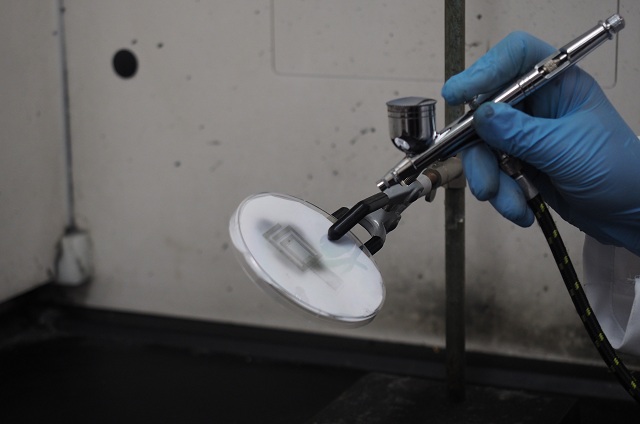Spray-On Antennas could be the Connecting Device in the near Future
Nowadays, most of us are using electronic devices for communications. In order to communicate with other devices there is a need for an antenna. The designing of the hardware is mainly influenced by the performance of the antenna.
If in the near future, we could take our antennas to any place and if they are in any shape, then it could be a breakthrough in future communication technology. This seems to be a possibility with the newly developed spray-on antenna at the Drexel University’s College of Engineering.
The material used for the spray-on antennas is known as MXene which has been developed at the Drexel University in 2011.
About MXene used in Spray-On Antenna
MXene is a class of two-dimensional inorganic compounds. It could be considered as the metallic equivalent of graphene. A single sheet of MXene is approximately 1 nanometer thick. This is 100,000 times thinner than a sheet of paper.
Creating the Spray-On antenna
The team from Drexel University used a type of MXenes that is based on titanium carbide. It is conductive to metals and the conductivity is maintained even when placing a number of sheets on top of each other while manufacturing it. The MXene is in powder form and it is soluble in water. The MXene titanium carbide is dissolved in water to create a paint or an ink. The MXenes in solution form, can then be sprayed on to the target area and create the spray-on antenna. The spray-on antenna can be of any shape you desire.
Advantages of Spray-On Antennas
These Spray-On antennas have a greater advantage over the traditional antennas. The biggest advantage is that they occupy very little space. This is very important as it can make space available for various other components within a device.
Manufacturing the spray-on antennas also is very simple and quick. You basically need to spray the material on to any target you desire.There is absolutely no need to treat the surface or use any binding agent.
In case there is limitation with regard to space within a device, then the spray-on antenna can be put on to any wearable and it will be completely transparent.
There is a lot of potential regarding the Spray-On antenna technology, since it opens up a lot of new places where networks can be set up.
The conductivity of the Spray-On antennas enables it to transmit and direct radio waves even if it is applied in a very thin coating.
Future of Spray-On antennas
Though the technology based on Spray-On antennas are in its early stages, the team at Drexel believe that this technology will improve as the years go by.
The ultra-thin antennas could become thinner and more flexible. The transmission of the Spray-On antennas could also see a great improvement. The team is studying the basic nature of these ultra-thin Spray-On antennas in order to make the designs suitable for use within the devices.
Drexel has a patent on the Spray-On antenna technology and in the near future will market the same.

 Why Your Link Building Efforts Might Fail
Why Your Link Building Efforts Might Fail  How to Request or Give Remote Control in a FaceTime Call on iPhone
How to Request or Give Remote Control in a FaceTime Call on iPhone  The Rise of Intelligent Automation in Business Operations
The Rise of Intelligent Automation in Business Operations  The Best Ideas for Designing Your Custom Printed Ring Binder
The Best Ideas for Designing Your Custom Printed Ring Binder  How Technology is Changing the Way We Play Hearts
How Technology is Changing the Way We Play Hearts  The Rise of Open Source: A Journey to Innovation and Collaboration
The Rise of Open Source: A Journey to Innovation and Collaboration  How SD-WAN Is Revolutionizing Business Networks
How SD-WAN Is Revolutionizing Business Networks  Effective Digital Advertising Strategies for Modern Businesses
Effective Digital Advertising Strategies for Modern Businesses  Tips for Marketing Dental Packages: Easy Ways to Grow Your Reach
Tips for Marketing Dental Packages: Easy Ways to Grow Your Reach 